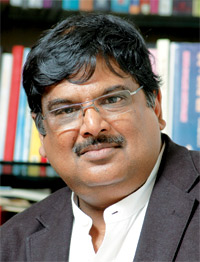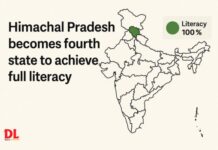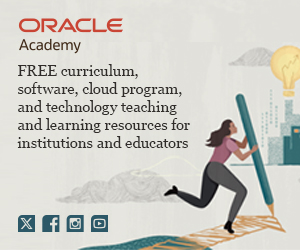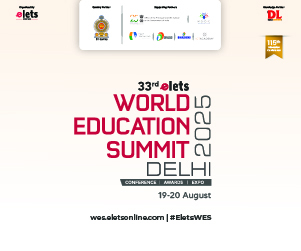 A mechanical engineer with specialisation in operations management from Yamaha Motor Company, Amit Gupta, CEO, S Chand Group realises that e-learning is a way of life. In an interaction with Dr Rajeshree Dutta Kumar and Pragya Gupta, he shares insights about e-Learning and school education in India.
A mechanical engineer with specialisation in operations management from Yamaha Motor Company, Amit Gupta, CEO, S Chand Group realises that e-learning is a way of life. In an interaction with Dr Rajeshree Dutta Kumar and Pragya Gupta, he shares insights about e-Learning and school education in India.
Share your views on the current education scenario. What is the role of e-learning in our school education?
I personally feel, e-learning is something that is already a part of life. Today, computer based learning, the internet, mobile and technology in general, across multiple domains has made information accessible to everyone. It has a major role in our school education. In school education your subject knowledge is not very important, but social skills are. The technology has made teaching very easy. Policy makers should provide teachers and educators with flexible technology-aided educational solutions tailored to the unique needs of students. I feel that e-learning is a way of life.
How can the private players facilitate e-learning?
Let the private players interact at large with the education system. Giving an ‘actual shape to PPP models’, allowing more private participation and benefit to maximum number of schools. Students today are exposed to technology in every aspect of their life. Therefore, it is key that our schools provide them similar 21stcentury learning environment in their classrooms too. Healthy competition stimulates growth and ensures striving for excellence, avoids complacency. e-learning is an exciting, growing field; but a large number of challenges are there. I am hopeful that the strengths of S. Chand will ensure our leadership in this new arena as in the field of publishing.
What is the role of technology in creating a better teaching-learning environment for students and teachers?
We should train our teachers and empower them to be able to use tools and technology effectively in their teaching practices. We should provide the basic infrastructure for sustained change in the form of technology – enabled learning environments. We need to provide spirally organised multimedia content based on sound pedagogical approach. This will ensure that the students can grow from one level of learning to the next, constructing new ideas based on their existing knowledge. Project-based learning allows students to acquire 21stcentury skills in the context of real-world scenarios. The integration of video and other media to support instruction links students with outside resources and enables teachers to address many learning styles at once. Never before have we had so much information as to how children learn, and we must seize this opportunity to bring about the much needed change in the way curriculum transaction takes place in our classrooms.
What specific issues within the e-education sector can your product
or services address?
We have our own standing in the field of academic textbooks. Houghton Mifflin Harcourt brings with them the complete understanding of emerging needs; they bring experience, content, products and investments. This is complemented by us to help meet local needs and carry out joint development. We launched a programme called Destination Success. This programme is a technology-enabled education solution using world-leading K-12 content. It is an interactive learning proposition that meets all the elements of CBSE’s directives. We have implemented this programme quite successfully in huge private schools in India and abroad and it has benefitted students and teachers. Today, worldwide the role of publishing companies has changed. In S.Chand, we have to recover knowledge partner. We have to re-structure as a learning and knowledge company. We need change to bring overall awareness in terms of the mindsets of people, in order to accept holistic learning and adopt e-learning. We are complementing K-12 education and bringing the latest instructional design and pedagogical inputs to the classroom. These issues are presently not being handled in teacher training. We will be bringing services in the knowledge sector, not only for academic purposes but for using assessment as a tool for identifying areas which need special attention or enrichment supplements. We have also partnered with global leaders to bring to India products for learning literacy and language skills in English and for learning mathematical concepts and computational skills. The first prerequisite for developing a 21stcentury learning community is the involvement of all the stakeholders including district leaders, principals, teachers, students, parents, and the business community. It is imperative that all stakeholders be involved in putting together a roadmap to bring about the requisite changes in the educational system, to prepare students for the workforce. The moot question here is – how prepared are we really to address this urgent need? The answer, unfortunately, is no.
Do you feel that reforms are needed in upgrading the curriculum?
Education reforms are a must and there must be involvement of educationists. We are not using technology in a proper way in our school education and it is not a one-way process. Right to Education (RTE) is something which I welcome. There must be some public private partnership model in it. Ministry of Human Resource Development has no plans for PP in school education. But there is tremendous disconnect from plan to implementation in Government approach and there is no clarity. We have taken professional development as a separate vertical. First, we are working with CBSE. Also, we have a lot of training workshops for the use of technology. When the CBSE urged schools to follow the guidelines as stated in the National Policy of Information and Communications Technology (ICT) in school education, we decided to throw in our lot. The CBSE schools were asked to set up at least one classroom for each class in the schools equipped with technology that would enable usage of digital instruction materials. That was when we decided to branch out into this emerging sector .
What other challenges you find in our education?
There is a disconnect between what is being taught in classrooms across the country today and the expected skills a student needs to be ready for the 21st century workspace, is stating the obvious. In a world fast shrinking to a global village, skills like global literacy, computer literacy, creativity, critical thinking, problem solving, effective communication and collaboration skills are essential for any child to grow up to be an effective and productive part of the society. \\










 Eduard Metzger
Eduard Metzger Anita Bir, Principal, RN Podar School, in conversation with Rachita Jha on her perspective of technology in school education
Anita Bir, Principal, RN Podar School, in conversation with Rachita Jha on her perspective of technology in school education Rajeev Singh, Country Head and General Manager of BenQ India has been in the industry from nearly two decades of extensive industry. In conversation with Pragya Gupta discusses on tremendous potential in multimedia facilitated education and BenQ’s technological innovation.
Rajeev Singh, Country Head and General Manager of BenQ India has been in the industry from nearly two decades of extensive industry. In conversation with Pragya Gupta discusses on tremendous potential in multimedia facilitated education and BenQ’s technological innovation. “The B and C class cities are mushrooming with professional educational institutes and this forms the largest source of the demand of projectors”
“The B and C class cities are mushrooming with professional educational institutes and this forms the largest source of the demand of projectors” 









